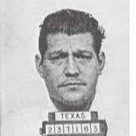
1940 - 1974
Federico Gómez Carrasco
Summary
Name:
Nickname:
Fred / El Señor / El ViejoYears Active:
1958 - 1974Birth:
February 10, 1940Status:
DeceasedClass:
MurdererVictims:
48Method:
ShootingDeath:
August 03, 1974Nationality:
USA
1940 - 1974
Federico Gómez Carrasco
Summary: Murderer
Name:
Federico Gómez CarrascoNickname:
Fred / El Señor / El ViejoStatus:
DeceasedVictims:
48Method:
ShootingNationality:
USABirth:
February 10, 1940Death:
August 03, 1974Years Active:
1958 - 1974bio
Federico Gómez Carrasco, widely known as Fred Carrasco, was born on February 10, 1940, in San Antonio, Texas. Of Mexican descent, Carrasco grew up to become one of the most powerful and feared drug lords operating along the Texas-Mexico border during the late 1960s and early 1970s.
By his late teens, Carrasco had already been convicted of murder without malice in 1958 and served two years in prison. He would go on to build a vast heroin and cocaine empire that stretched from Guadalajara, Mexico, to major U.S. cities such as San Diego and Chicago. Known for his ruthlessness and influence, Carrasco earned the nickname "El Viejo" (The Old Man) despite being in his early thirties, due to his deep experience in drug trafficking.
In September 1972, Carrasco was arrested in Guadalajara with 213 pounds of heroin worth over $100 million. Only a few months later, in December 1972, he managed a dramatic escape from prison in Jalisco by bribing officials and hiding inside a laundry truck. In July 1973, he was arrested again in San Antonio, Texas, after surviving four gunshot wounds from police. At the time of his final imprisonment, Carrasco faced a life sentence for the attempted murder of a police officer and was suspected of at least 47 murders linked to his drug empire.
murder story
On July 24, 1974, Federico "Fred" Carrasco orchestrated one of the most notorious prison uprisings in U.S. history at the Walls Unit in Huntsville, Texas. Armed with smuggled .357 magnum pistols and more than 300 rounds of ammunition, Carrasco, along with two other inmates, Ignacio Cuevas and Rodolpho Dominguez, took eleven prison employees and four inmates hostage inside the prison’s education and library building.
Carrasco’s criminal network had bribed a prison worker to smuggle weapons hidden inside food cans. Once armed, Carrasco demanded a series of items including tailored suits, walkie-talkies, and an armored escape vehicle. Claiming plans to flee to Cuba and seek asylum under Fidel Castro, Carrasco maintained control over the hostages for eleven tense days while negotiating with prison officials, FBI agents, and Texas Rangers.
On August 3, 1974, the inmates attempted their escape using a human shield contraption dubbed the "Trojan Taco." Four hostages were forced inside the makeshift armored cover while eight others were used to form its perimeter. As they moved toward the armored vehicle, guards activated high-pressure water hoses in an attempt to subdue the escape. A malfunction in one hose allowed Carrasco and his accomplices to open fire, fatally shooting two female hostages, Yvonne Beseda and Julia Standley, who had volunteered to enter the armored car with the convicts.
Texas Rangers and prison guards returned fire. Realizing escape was impossible, Carrasco committed suicide after a 10-minute gunfight. Dominguez was also killed, while Cuevas surrendered. Cuevas was later convicted of capital murder for killing Julia Standley and sentenced to death. He was executed by lethal injection on May 23, 1991.
Carrasco’s violent reign ended in tragedy, leaving at least 48 confirmed or suspected murder victims throughout his criminal career. The siege remains one of the longest and deadliest prison hostage incidents in U.S. history.